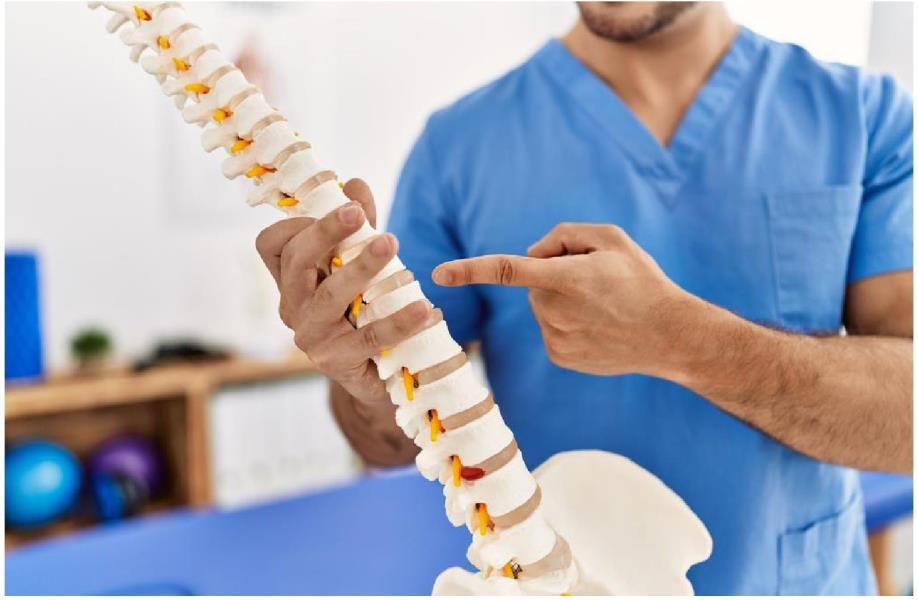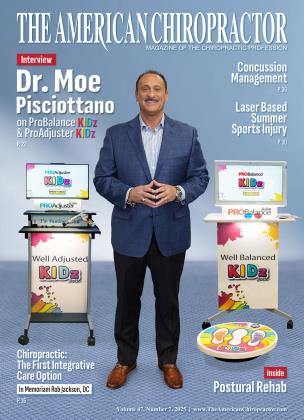
Daniel J. Murphy DC, DABCO
Spinal Manipulation in the Treatment of Low Back Pain by W.
H. Kirkaldy-Willis and J. D. Cassidy
Canadian Family Physician,
March 1985; Vol. 31; pp. 535-540
This article is now 30 years old. Many younger chiropractors are unaware of it, so it is reviewed here. Dr. Kirkaldy-Willis, MD, was a professor emeritus of orthopedics and director of the Low-Back Pain Clinic at the University Hospital, Saskatoon, Canada. Dr. Cassidy is a chiropractor.
“Over the past decade, there has been an escalation of clinical and basic science research on manipulative therapy, which has shown that there is a scientific basis for the treatment of back pain by manipulation.”
“Spinal manipulation is an assisted passive motion applied to the spinal apophyseal and sacroiliac joints.”
Joint manipulation [adjusting] “requires precise positioning of the joint at the end of the passive range of motion and the proper degree of force to overcome joint coaptation” to overcome the resistance of the joint surfaces in contact.
“With experience, the manipulator can be very specific in selecting the spinal level to be manipulated.”
Melzack and Wall proposed the Gate Theory of Pain in 1965, and this theory has “withstood rigorous scientific scrutiny.” These authors apply this theory to chiropractic spinal adjusting:
• “The central transmission of pain can be blocked by increased proprioceptive input.” Pain is facilitated by “lack of proprioceptive input.”
• The facet capsules are densely populated with mechanoreceptors. “Increased proprioceptive input in the form of spinal mobility tends to decrease the central transmission of pain from adjacent spinal structures by closing the gate. Any therapy [that] induces motion into articular structures will help inhibit pain transmission by this means.”
Stretching of facet joint capsules will fire capsular mechanoreceptors, which will reflexively “inhibit facilitated motoneuron pools” that are responsible for the muscle spasms that commonly accompany low back pain.
In chronic cases, the periarticular connective tissues shorten, and intra-articular adhesions may form; manipulations can stretch or break these adhesions.
“In most cases of chronic low back pain, there is an initial increase in symptoms after the first few manipulations [probably as a result of breaking adhesions]. In almost all cases, this increase in pain is temporary and can be easily controlled by local application of ice.”
“However, the gain in mobility must be maintained during this period to prevent further adhesion formation.”
These authors present the results of a prospective observational study of spinal manipulation in 283 patients with chronic low back and leg pain. All 283 patients in this study had failed prior conservative or operative treatment, and they were all totally disabled with “constant severe pain; disability unaffected by treatment.” These patients were given a “twoor three-week regimen of daily spinal manipulations by an experienced chiropractor.”
• “No patients were made worse by the manipulation, yet many experienced an increase in pain during the first week of treatment. Patients undergoing manipulative treatment must, therefore, be reassured that the initial discomfort is only temporary.”
• “In our experience, anything less than two weeks of daily manipulation is inadequate for chronic low back pain patients.”
These authors considered a good result from manipulation to be:
• “Symptom-free with no restrictions for work or other activities.”
• “Mild intermittent pain with no restrictions for work or other activities.”
Eighty-one percent of the patients with referred pain syndromes subsequent to joint dysfunctions achieved the “good” result.
Forty-eight percent of the patients with nerve compression syndromes, primarily subsequent to disc lesions or central canal spinal stenosis, achieved the “good” result.
“The physician who makes use of this [manipulation] resource will provide relief for many back pain patients.”

Dan Murphy has provided weekly reviews of pertinent articles for the chiropractic community for 25 years. Topics range from nutrition, neurology, orthopedics, biomechanics, diet, exercise, immunology, whiplash injury, radiology, clinical anatomy, chiropractic care, and more. Here is what one subscriber said: “I am very grateful for keeping me in the loop of knowledge. These article reviews are priceless.”
Interested chiropractors can sign up for this service on his website: www.DanMurphyDC.com.
 View Full Issue
View Full Issue









